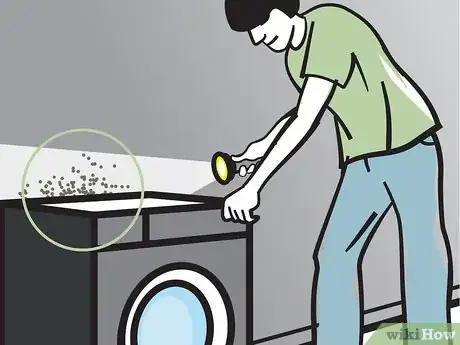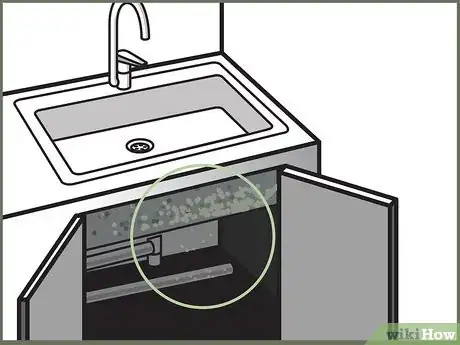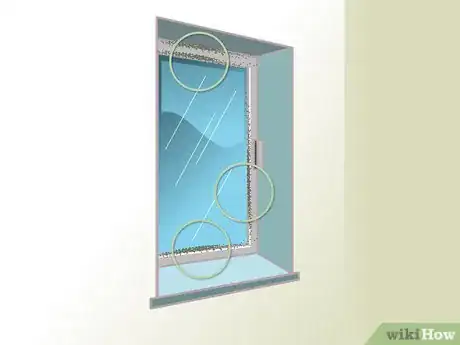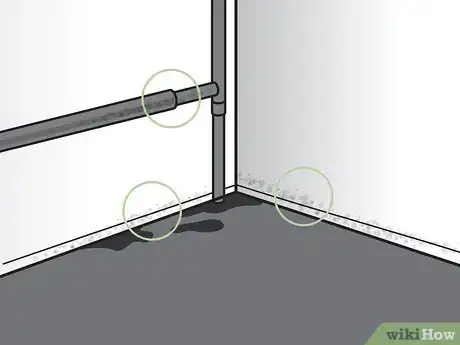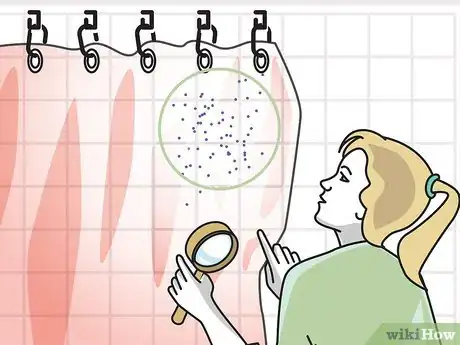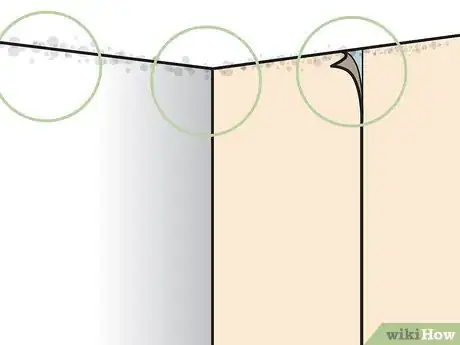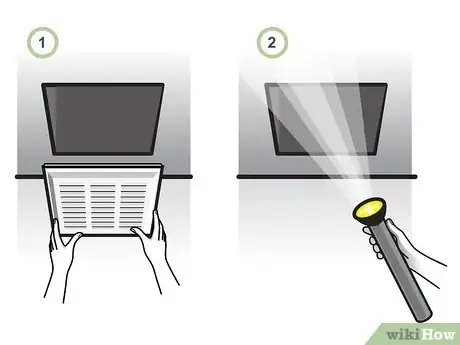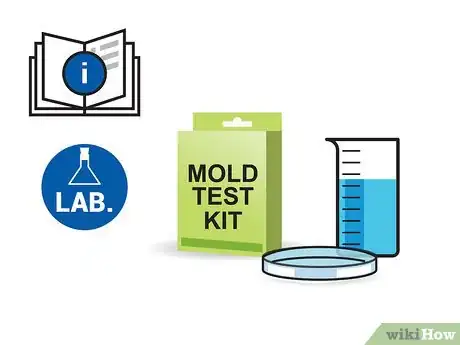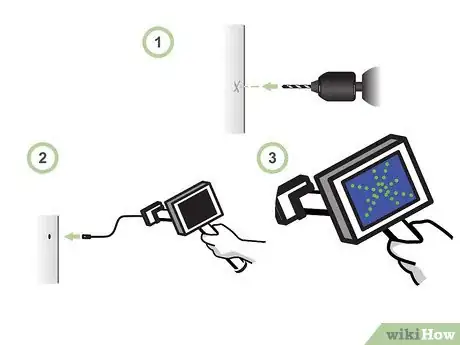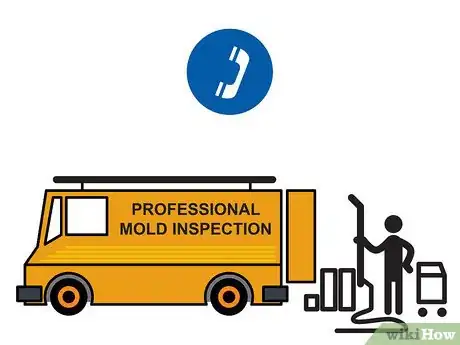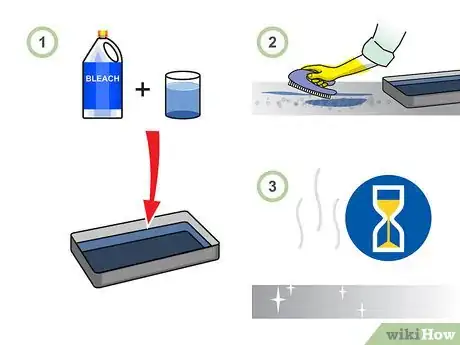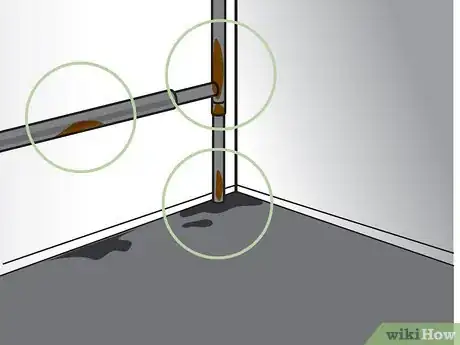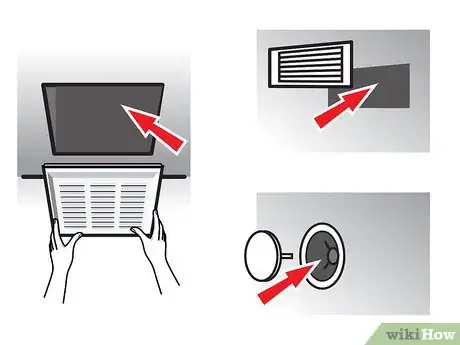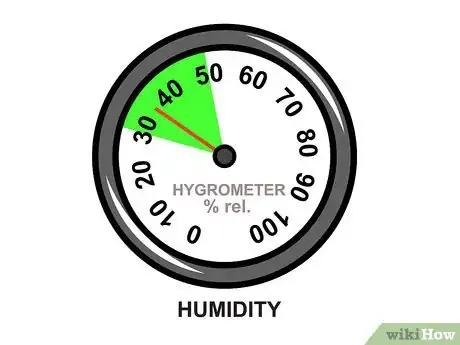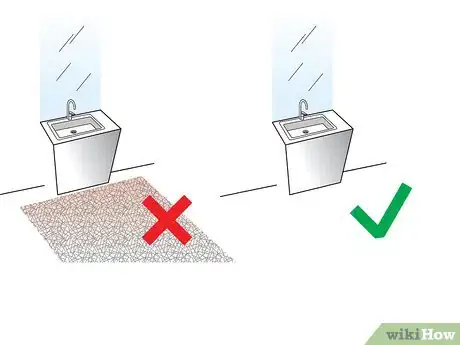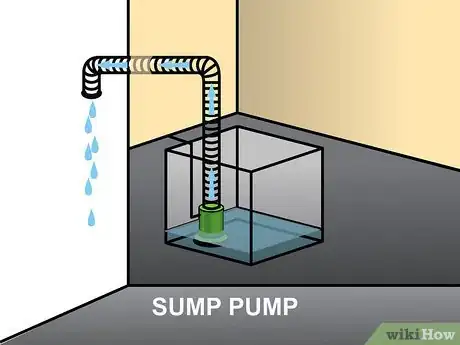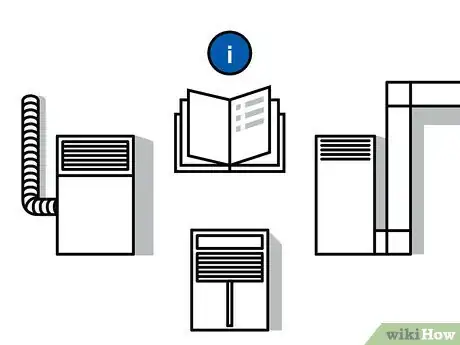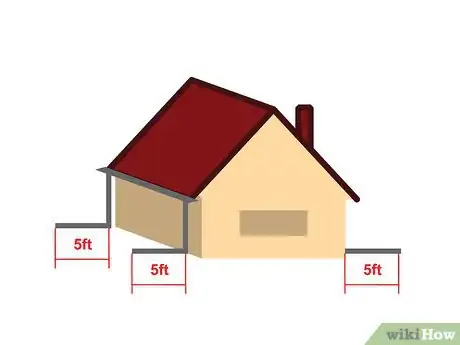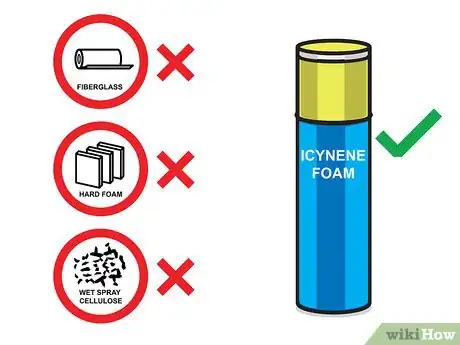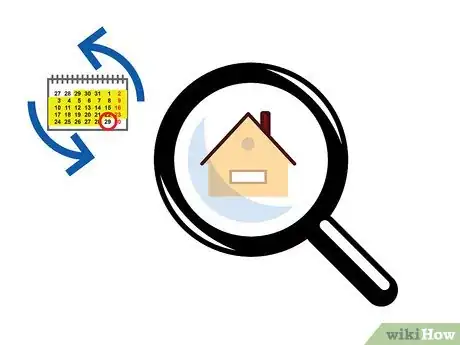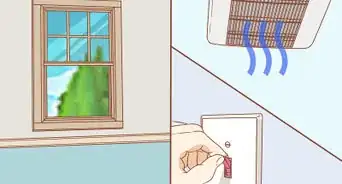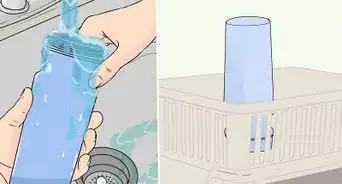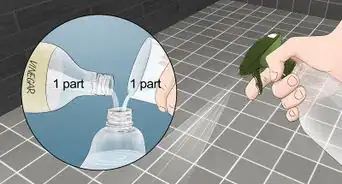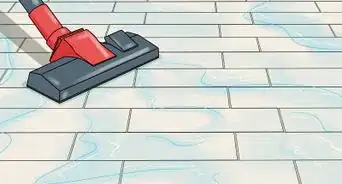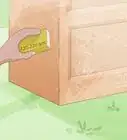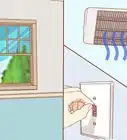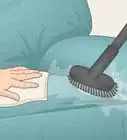This article was co-authored by Bridgett Price. Bridgett Price is a Cleaning Guru and Co-Owner of Maideasy, a maid service company that services the Phoenix, Arizona metropolitan area. She holds a Master of Management from the University of Phoenix, specializing in digital and traditional marketing.
There are 19 references cited in this article, which can be found at the bottom of the page.
wikiHow marks an article as reader-approved once it receives enough positive feedback. In this case, 100% of readers who voted found the article helpful, earning it our reader-approved status.
This article has been viewed 293,907 times.
Mold is a type of fungus that grows in moist environments and reproduces by microscopic seeds called spores. Even if you're healthy, you can suffer from respiratory issues, skin irritation, and headaches if you're exposed to dangerous forms of mold.[1] If you share your home with children, elderly loved ones, or anyone with respiratory problems, they're at an even greater risk. Therefore, it's very important to learn how to find, test for, and treat mold. This knowledge could improve your health and even save your life.
Steps
Checking for Visible Mold
-
1Look for telltale characteristics. Mold often has a fuzzy appearance but can also look like a stain if it's growing on a wall or furniture. Its most common colors are black green, brown, or white. Mold can feel like cotton, leather, velvet, or sand paper. It usually gives off a musty or earthy odor. Also look for visible signs of possible water damage such as stains or paint bubbling. This could mean there is mold growth within the wall cavity.
-
2Check the basement. This should be the first place you look. Its underground location makes it especially vulnerable to moisture and humidity buildup. After each heavy rain, look for and immediately treat any water seepage.[2] Check the following spots:
- Baseboards
- Walls, especially where they meet the ceiling
- Behind and under appliances, especially the washer and dryer
Advertisement -
3Check the utility room. Look in and around the clothes dryer duct for mold growth. If it's not properly ventilated, it can trigger a build-up in humidity in the room. Make sure the duct is vented toward the exterior of the house.[3]
-
4
-
5Check your windows. If your house isn't properly insulated, windows could accumulate condensation year-round. Look for mold growth around each individual pane and along the frames.[6]
-
6Check places recently damaged by water. Inspect the baseboards in the basement and first/ground floor if your house recently flooded. Tear out all carpeting in these areas. If you recently experienced heavy rain, look for water stains in the attic and on the upper-story living areas.[7]
- If a pipe recently burst, treat all water-damaged areas as if they had been flooded.
-
7Check shower curtains. Dirt and grime that washes off your body has a tendency to mix with shampoo and soap residue. This mixture ultimately collects on shower curtains. Make sure the bathroom is well lit. Spread out the shower curtain to check the entire surface. Use a magnifying glass to check for small patches of mold that you could otherwise miss.
-
8Check ceiling corners. The corners where your walls meet the ceiling are prime locations for mold growth because they trap water from roof leaks. Check for growth and accumulation in all four corners of each room. If your wallpaper is peeling at the ceiling juncture, check behind it for mold growth.[8]
-
9Check air ducts and vents. Fluctuations between heating and air conditioning cause moisture buildup on cooling coils and in drain pans. Remove the vent plate from the duct and inspect it closely. Turn on the lights or use a strong LED flashlight to easily catch mold clusters. Check the duct for as far as your eye can see.
Testing for Hidden or Airborne Mold
-
1Use an in-home mold testing kit. In-home testing kits come equipped with their own instruments and instructions. Follow the kit's directions. Submit the sampling to a local lab.
- If you see mold in a visual inspection, a testing kit isn't necessary.[9]
- These kits can be difficult to use, and their results can be unreliable. Use them only as a last resort if other options aren't available.
-
2Use a borescope. A borescope can be helpful for inspecting spaces between walls.[10] Drill a small hole into a wall recently affected by water or moisture. Slowly insert the fiber optic cable end through the hole. Check the monitor for signs of mold. Continue to move slowly as you probe deeper into the area.
- Borescopes distort the size and color of mold on the monitor. If you find areas of discoloration inside the wall, contact a professional for a second opinion.
- You can also use a borescope to inspect air ducts, but there are drawbacks. The instrument only lets you see so far into a duct. If the duct makes a sudden 90-degree turn, you won't be able to see beyond that turn.
-
3Hire a professional mold inspector. They have instruments for mold detection that aren't available to the general public. Get estimates from several inspectors to make sure you get a fair deal. Contact former customers for reviews and possible complaints. Consult your state's contractor licensing board to ensure your potential inspector is licensed. Make sure the inspector works with a lab accredited by the Environmental Protection Agency (EPA) or American Industrial Hygiene Association (AIHA).[11]
Treating the Affected Areas
-
1Protect yourself. Cover your mouth and nose with an N-95 respirator to avoid breathing in spores. Wear elbow-length rubber or latex gloves to protect your hands from mold and cleaning materials. Cover your eyes with goggles to protect them from airborne spores.[12]
-
2Clean hard surfaces. Mix equal parts water and detergent or bleach. Dip a scrub brush into the mixture and remove the mold. Dry the area completely when you're finished.[13]
-
3Fix all leaks. If you noticed any leaking pipes or water seepage in your inspection, deal with it immediately. Call a professional plumber to repair leaking or sweating pipes. Fill in any spaces between pipes and walls with caulk or Icynene insulation.
-
4Seal small openings. Use caulk to seal cracks around your windows, doors, and at critical junctures where the walls meet the floor and the ceiling. Apply caulk or weather stripping to your windows, especially between the frames and panes. Dry the area completely.[14]
- Don't caulk or paint any surfaces until the mold is completely removed.
- If you're not comfortable doing these repairs, hire a professional.
-
5Have your air ducts cleaned. Unless you're trained to remove mold from air ducts, call a professional. This is especially crucial if you notice mold growth in more than one room or if your mold problem keeps recurring despite your best efforts. Search online for local professionals or ask your local health department for a recommendation.[15]
-
6Dispose of surfaces that absorb moisture. If you notice mold on carpeting, ceiling tiles, and other porous surfaces, remove and discard them. The mold makes them unfit for recycling. Ask your local waste management whether they consider it hazardous waste.[16]
-
7
Preventing Future Growth
-
1Reduce humidity levels. Keep the humidity level in your home between 30 and 50 percent. Open the windows on days when it's not humid. This will allow fresh air to circulate and inhibit mold growth. If you live in a humid climate, run a dehumidifier in the rooms most prone to moisture.[19]
-
2Remove carpeting from the basement and bathroom. These areas are already prone to humidity. Carpets can trap moisture under their surface, even without flooding or water seepage. If your basement or bathroom isn't carpeted, leave the floors bare. Use removable, washable mats to avoid slip hazards.[20]
-
3Install a sump pump. This is a great investment if you live in a flood-prone area. Water that seeps into the basement collects in a sump basin and is pumped outside. Unless you are a licensed home improvement contractor, call a professional to install one. Choose a sump pump with the following specs:
- Cast iron core
- Alarm that sounds when the water level gets too high
- Mechanical switch
- Submersible pump
- No-screen intake design
- Impeller that can deal with objects of 0.5 inches (1.3 cm) in diameter.[21]
-
4Run exhaust fans. When you cook, turn on the exhaust fan over the stove to catch water vapor. Use the fan in the bathroom as you shower to reduce condensation cause by steam. Even if you take cooler showers, run the exhaust fan for good measure. Let the fans in each room run until all steam has been eliminated.[22]
-
5Use dehumidifiers. Install them in the basement and in closets. Clean each dehumidifier regularly. Follow the manufacturer's instructions closely for best results.[23]
-
6Wipe down the shower curtain. Use a clean dry towel or a squeegee to remove any leftover water droplets. Make sure the curtain is completely dry. Do this after the last shower of the day to prevent moisture buildup.[24]
-
7Prevent water from pooling. Water can pond around the foundation of your house and push moisture into the interior. Landscape the area around the foundation to slope downward and away from the foundation. Add extensions to downspouts to direct rainwater at least 5 feet (1.5 m) away from the foundation.
-
8Use the right insulation. Apply spray-on Icynene foam to the ceiling of your attic. The foam forms a water-tight seal as it dries. Avoid fiberglass and hard foam insulation. They can separate from their surfaces and allow moisture to seep in. Wet spray-applied cellulose insulation is also prone to mold.[25]
-
9Inspect your home regularly. Check all problem areas or potential problem areas for mold (re)growth. Monitor all sealed leaks and cracks after heavy rains or floods. Otherwise, recheck your home thoroughly every six months.
Expert Q&A
-
QuestionHow hard is it to get rid of mold?
 Bridgett PriceBridgett Price is a Cleaning Guru and Co-Owner of Maideasy, a maid service company that services the Phoenix, Arizona metropolitan area. She holds a Master of Management from the University of Phoenix, specializing in digital and traditional marketing.
Bridgett PriceBridgett Price is a Cleaning Guru and Co-Owner of Maideasy, a maid service company that services the Phoenix, Arizona metropolitan area. She holds a Master of Management from the University of Phoenix, specializing in digital and traditional marketing.
House Cleaning Professional You can use a bleach solution, or use a mixture of vinegar and water. Be sure to never mix vinegar and bleach, though, as it creates a toxic solution.
You can use a bleach solution, or use a mixture of vinegar and water. Be sure to never mix vinegar and bleach, though, as it creates a toxic solution.
Things You'll Need
- LED flashlight
- Borescope (optional)
- Mold testing kit (optional)
- Bleach or detergent
- Bucket
- Scrub brush
- Latex or rubber gloves
- Dehumidifier
- Icynene foam insulation
References
- ↑ https://www.cdc.gov/mold/faqs.htm#affect
- ↑ https://www.cdc.gov/mold/faqs.htm#where
- ↑ http://www.epa.gov/mold/interactive-mold-house-tour
- ↑ https://www.cdc.gov/mold/faqs.htm#where
- ↑ https://www.epa.gov/mold/interactive-mold-house-tour
- ↑ http://www.epa.gov/mold/interactive-mold-house-tour
- ↑ https://www.epa.gov/mold/interactive-mold-house-tour
- ↑ https://www.epa.gov/mold/interactive-mold-house-tour
- ↑ https://www.epa.gov/mold/mold-testing-or-sampling
- ↑ https://www.epa.gov/mold/mold-course-chapter-3#Chapter3Lesson2
- ↑ https://www.dhs.wisconsin.gov/mold/hiringguide.htm
- ↑ https://www.epa.gov/mold/brief-guide-mold-moisture-and-your-home#tab-4
- ↑ https://www.epa.gov/mold/mold-cleanup-your-home#TipsandTechniques
- ↑ https://www.epa.gov/mold/mold-cleanup-your-home#TipsandTechniques
- ↑ https://www.epa.gov/indoor-air-quality-iaq/should-you-have-air-ducts-your-home-cleaned
- ↑ https://www.fema.gov/pdf/rebuild/recover/fema_mold_brochure_english.pdf
- ↑ Bridgett Price. House Cleaning Professional. Expert Interview. 23 May 2019.
- ↑ https://www.epa.gov/mold/mold-cleanup-your-home#TipsandTechniques
- ↑ https://www.epa.gov/mold/interactive-mold-house-tour
- ↑ https://www.cdc.gov/mold/faqs.htm#decrease
- ↑ https://www.bobvila.com/articles/some-advice-about-sump-pumps/
- ↑ https://www.epa.gov/mold/interactive-mold-house-tour
- ↑ https://www.epa.gov/mold/interactive-mold-house-tour
- ↑ http://www.bhg.com/homekeeping/house-cleaning/tips/how-to-prevent-mold-and-mildew/
- ↑ https://www.ncbi.nlm.nih.gov/pubmed/16499151
- ↑ https://www.epa.gov/mold/mold-remediation-schools-and-commercial-buildings-guide
- ↑ https://www.cdc.gov/mold/stachy.htm#Q4
About This Article
To test for mold, start by looking for signs of visible mold in your home in places where there is a lot of moisture and humidity, like the basement or utility room. Also, look under sinks and in the corners of ceilings for spots of fuzzy black, green, or brown mold that give off a musty odor. If you still can’t find mold, but suspect it’s hidden in your walls or ceiling, try using an in-home mold testing kit and send in a sample to the lab according to the directions. For tips on how to get rid of mold in your home and keep it from coming back, read on!

